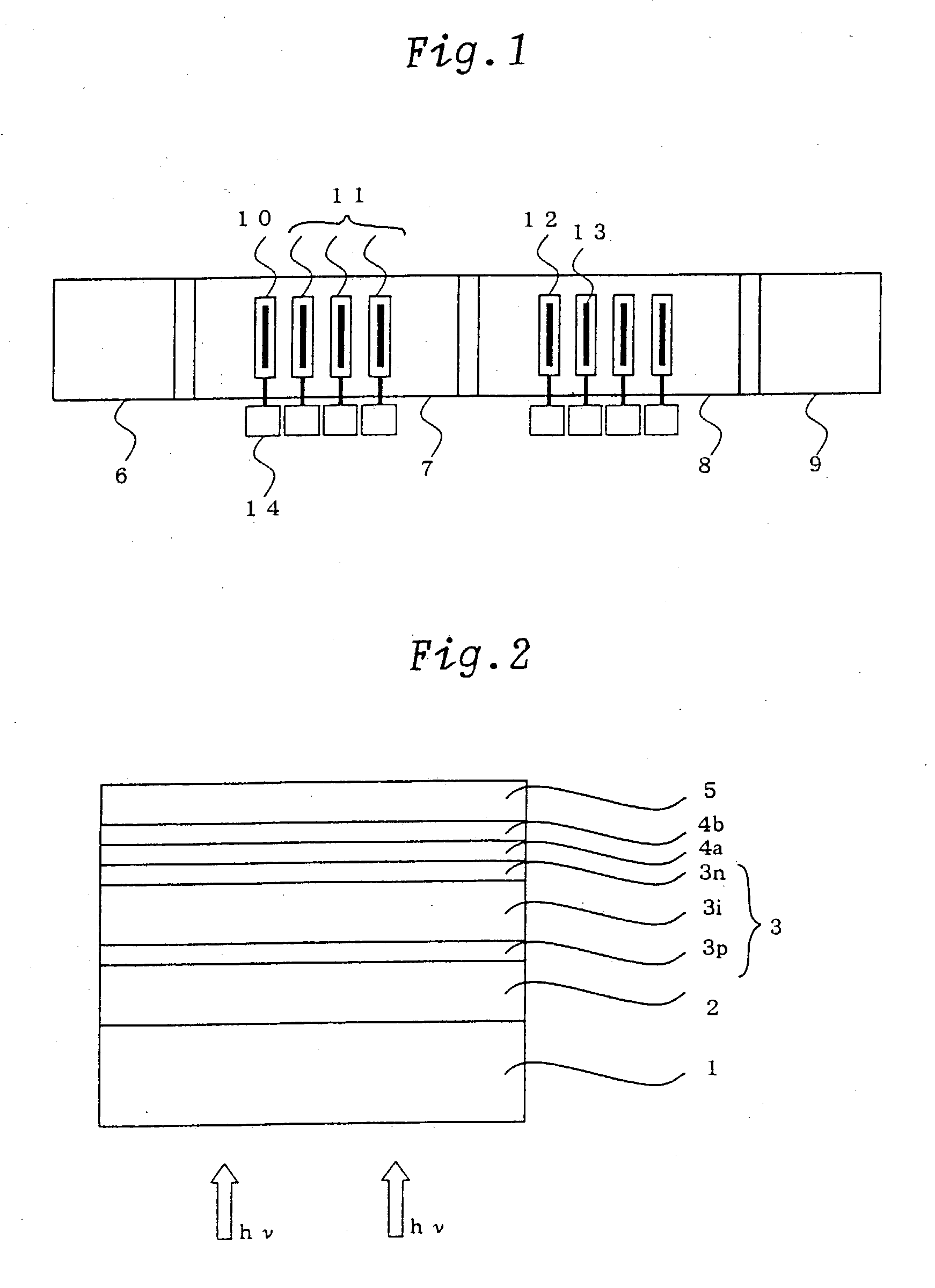Thin-film solar cell and manufacture method therefor
a technology of thin film and solar cells, applied in the direction of electrolysis components, vacuum evaporation coatings, coatings, etc., can solve the problems of production costs, complex apparatus, and metal itself diffraction
- Summary
- Abstract
- Description
- Claims
- Application Information
AI Technical Summary
Benefits of technology
Problems solved by technology
Method used
Image
Examples
Embodiment Construction
, the substrate 1 was heated to 150.degree. C. in the preparation chamber 6, which was vacuumed to 8.times.10.sup.-3 Pa. Before film deposition in the ITO and ZnO deposit chamber 7, the back pressure was set to 3.times.10.sup.-3 Pa. In the ITO and ZnO deposit chamber 7, used was an ITO target produced by cold pressing which had a relative density of 92% and a tin content of 5 wt % or an ZnO:Ga target produced by cold pressing which had a relative density of 92% and a Ga content of 5 wt %. In a state of a cumulative discharge power energy of 100 kWh, ITO or ZnO:Ga and ZnO:Al were deposited to 25 nm and 75 nm thickness, respectively. The magnetic field intensity was 1,000 G on the surfaces of all the targets, and the discharge power was DC 2.5 W / cm.sup.2 for all the targets.
[0047] As Production Example 2, the glass substrate 1 was heated in the preparation chamber 6, which was vacuumed, in the same manner as in Production Example 1. In the ITO and ZnO deposit chamber 7, used was an IT...
PUM
| Property | Measurement | Unit |
|---|---|---|
| thick | aaaaa | aaaaa |
| thick | aaaaa | aaaaa |
| magnetic field intensity | aaaaa | aaaaa |
Abstract
Description
Claims
Application Information
 Login to View More
Login to View More - R&D
- Intellectual Property
- Life Sciences
- Materials
- Tech Scout
- Unparalleled Data Quality
- Higher Quality Content
- 60% Fewer Hallucinations
Browse by: Latest US Patents, China's latest patents, Technical Efficacy Thesaurus, Application Domain, Technology Topic, Popular Technical Reports.
© 2025 PatSnap. All rights reserved.Legal|Privacy policy|Modern Slavery Act Transparency Statement|Sitemap|About US| Contact US: help@patsnap.com


